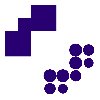


i
Xebia
Work with us
![]()
Filter interviews by
Xebia Senior Software Engineer Interview Questions and Answers
7 Interview questions
Profiles in Spring Boot allow you to define different configurations for different environments.
Profiles are used to customize application behavior based on the environment it is running in.
You can define profiles in application.properties or application.yml using 'spring.profiles.active' property.
Common profiles include 'dev', 'test', and 'prod' for development, testing, and production environments.
You can have d...
Eviction policy in cache determines which items should be removed when the cache reaches its maximum capacity.
Eviction policy helps in managing the cache size and ensuring that the most relevant data is retained.
Common eviction policies include LRU (Least Recently Used), LFU (Least Frequently Used), and FIFO (First In, First Out).
For example, in LRU policy, the least recently accessed items are removed from the ca...
Factory pattern is a creational design pattern that provides an interface for creating objects in a superclass, but allows subclasses to alter the type of objects that will be created.
Create an interface or abstract class for the factory with a method to create objects
Create concrete classes that implement the factory interface and return specific types of objects
Client code uses the factory to create objects with...
Java 8 introduced several new features including lambda expressions, functional interfaces, streams, and default methods.
Lambda expressions: Enable functional programming in Java by expressing instances of single-method interfaces (functional interfaces) concisely.
Functional interfaces: Interfaces with a single abstract method, such as java.util.function.Function or java.util.function.Predicate.
Streams: Allow for ...
LRU (Least Recently Used) is a cache eviction policy where the least recently accessed items are removed from the cache when it reaches its capacity.
LRU cache stores key-value pairs with a maximum capacity. When the cache is full, the least recently used item is evicted to make space for new items.
Each time a key is accessed in the cache, it is moved to the front of the cache to indicate it was the most recently u...
Yes, I have worked on Kafka. My code had 10 partitions.
Yes, I have experience working with Kafka and have implemented code with multiple partitions.
In one of my projects, I used Kafka with 10 partitions to distribute the workload efficiently.
Having multiple partitions in Kafka helped in achieving high throughput and scalability for real-time data processing.
I have used Redis and Memcached. Cache is needed to improve performance by storing frequently accessed data in memory.
Used Redis for key-value storage and Memcached for object caching
Cache is needed to reduce database load and improve response time
Helps in storing frequently accessed data in memory for quick retrieval
Xebia Senior Software Engineer Interview Experiences
1 interview found
I applied via Naukri.com and was interviewed in Feb 2024. There was 1 interview round.
(7 Questions)
- Q1. What are Java 8 new features? Which of these have you used?
- Ans.
Java 8 introduced several new features including lambda expressions, functional interfaces, streams, and default methods.
Lambda expressions: Enable functional programming in Java by expressing instances of single-method interfaces (functional interfaces) concisely.
Functional interfaces: Interfaces with a single abstract method, such as java.util.function.Function or java.util.function.Predicate.
Streams: Allow for proce...
- Q2. Are you aware of Eviction Policy in Cache?
- Ans.
Eviction policy in cache determines which items should be removed when the cache reaches its maximum capacity.
Eviction policy helps in managing the cache size and ensuring that the most relevant data is retained.
Common eviction policies include LRU (Least Recently Used), LFU (Least Frequently Used), and FIFO (First In, First Out).
For example, in LRU policy, the least recently accessed items are removed from the cache w...
- Q3. LRU in cache? WAP to demonstrate LRU in Cache.
- Ans.
LRU (Least Recently Used) is a cache eviction policy where the least recently accessed items are removed from the cache when it reaches its capacity.
LRU cache stores key-value pairs with a maximum capacity. When the cache is full, the least recently used item is evicted to make space for new items.
Each time a key is accessed in the cache, it is moved to the front of the cache to indicate it was the most recently used i...
- Q4. Implement Factory Pattern.
- Ans.
Factory pattern is a creational design pattern that provides an interface for creating objects in a superclass, but allows subclasses to alter the type of objects that will be created.
Create an interface or abstract class for the factory with a method to create objects
Create concrete classes that implement the factory interface and return specific types of objects
Client code uses the factory to create objects without k...
- Q5. What are profiles in spring boot?
- Ans.
Profiles in Spring Boot allow you to define different configurations for different environments.
Profiles are used to customize application behavior based on the environment it is running in.
You can define profiles in application.properties or application.yml using 'spring.profiles.active' property.
Common profiles include 'dev', 'test', and 'prod' for development, testing, and production environments.
You can have differ...
- Q6. Which cache have you used? Why is Cache needed
- Ans.
I have used Redis and Memcached. Cache is needed to improve performance by storing frequently accessed data in memory.
Used Redis for key-value storage and Memcached for object caching
Cache is needed to reduce database load and improve response time
Helps in storing frequently accessed data in memory for quick retrieval
- Q7. Have you worked on Kafka? How many partitions did your code have?
- Ans.
Yes, I have worked on Kafka. My code had 10 partitions.
Yes, I have experience working with Kafka and have implemented code with multiple partitions.
In one of my projects, I used Kafka with 10 partitions to distribute the workload efficiently.
Having multiple partitions in Kafka helped in achieving high throughput and scalability for real-time data processing.
Interview Preparation Tips
- Java
- Cache
- Spring Boot
- Kafka
Skills evaluated in this interview
Top trending discussions






Interview questions from similar companies

Software Developer Interview Questions & Answers
Bounteous x Accoliteposted on 11 Mar 2022
I appeared for an interview before Mar 2021.
(3 Questions)
Round duration - 60 minutes
Round difficulty - Medium
21 students were shortlisted from the 1st MCQ round and in this round we were asked to write the codes (function only) of 3 questions in 1 hour time.
- Q1.
Rotting Oranges Problem Statement
You are given a grid containing oranges where each cell of the grid can contain one of the three integer values:
- 0 - representing an empty cell
- 1 - representing a fre...
- Ans.
Find the minimum time required to rot all fresh oranges in a grid.
Use Breadth First Search (BFS) to simulate the rotting process
Track the time taken to rot all oranges and return -1 if any fresh oranges remain
Handle edge cases like no fresh oranges or all oranges already rotten
Consider using a queue to efficiently process adjacent oranges
- Q2.
Majority Element Problem Statement
Given an array/list 'ARR' consisting of 'N' integers, your task is to find the majority element in the array. If there is no majority element present, return -1.
Exampl...
- Ans.
Find the majority element in an array, return -1 if no majority element exists.
Iterate through the array and keep track of the count of each element using a hashmap.
Check if any element's count is greater than floor(N/2) to determine the majority element.
Return the majority element or -1 if no majority element exists.
- Q3.
Maximum Path Sum Between Two Leaves Problem Description
You are provided with a non-empty binary tree in which each node contains a non-negative integer value. Your task is to find and return the maximum ...
- Ans.
Find the maximum path sum between two leaf nodes in a binary tree.
Traverse the tree to find the maximum path sum between two leaf nodes.
Keep track of the maximum sum found so far.
Consider all possible paths between leaf nodes.
Handle cases where the tree has only a single leaf node.
Implement a recursive function to calculate the maximum path sum.
(3 Questions)
Round duration - 60 minutes
Round difficulty - Medium
This was a technical round with DSA based questions.
- Q1.
N-th Node From The End Problem Statement
You are given a Singly Linked List of integers. The task is to find the N-th node from the end of the list.
Example:
Input:
If the given list is (1 -> -2 -&g...
- Ans.
Find the N-th node from the end of a Singly Linked List of integers.
Traverse the list to find the length L of the list.
Calculate the position of the N-th node from the beginning as L - N + 1.
Traverse the list again to reach the calculated position and return the node's value.
- Q2.
LCA of Binary Tree Problem Statement
You are given a binary tree consisting of distinct integers and two nodes,
XandY. Your task is to find and return the Lowest Common Ancestor (LCA) of these two nodes... - Ans.
Find the Lowest Common Ancestor (LCA) of two nodes in a binary tree.
Traverse the binary tree to find the paths from the root to nodes X and Y.
Compare the paths to find the last common node, which is the LCA.
Handle cases where one node is an ancestor of the other or when one node is the LCA itself.
- Q3.
Reverse Words in a String: Problem Statement
You are given a string of length
N. Your task is to reverse the string word by word. The input may contain multiple spaces between words and may have leading o... - Ans.
Reverse words in a string while handling leading/trailing spaces and multiple spaces between words.
Split the input string by spaces to get individual words
Reverse the list of words
Join the reversed words with a single space in between
Handle leading/trailing spaces by stripping them before and after reversing
(3 Questions)
Round duration - 60 minutes
Round difficulty - Easy
Technical Interview round with questions based on DSA
- Q1.
Minimum Time To Solve The Problems
Given 'N' subjects, each containing a certain number of problems, and 'K' friends, assign subjects to friends such that each subject goes to exactly one friend, maintain...
- Ans.
Assign subjects to friends to minimize maximum workload, find minimum time for most loaded friend.
Sort subjects in descending order
Assign subjects to friends one by one until all subjects are assigned
The maximum workload will be the sum of problems assigned to the friend with the most problems
Return the maximum workload as the minimum time required
- Q2. What is grammar in the context of compiler design?
- Ans.
Grammar in compiler design defines the syntax and structure of a programming language.
Grammar specifies the rules for forming valid statements in a programming language.
It consists of a set of production rules that define how valid programs can be constructed.
There are different types of grammars such as context-free grammar, regular grammar, etc.
Example: In C programming language, the grammar specifies that a for loop...
- Q3. What is a token in compiler design?
- Ans.
A token in compiler design is a basic unit of syntax that the compiler can understand and process.
Tokens are the smallest units of a program that are meaningful to the compiler.
Examples of tokens include keywords, identifiers, operators, and punctuation symbols.
Tokens are generated by the lexical analysis phase of the compiler.
Tokens are used by the parser to build the abstract syntax tree of the program.
(3 Questions)
Round duration - 60 minutes
Round difficulty - Easy
Technical round with questions on DSA and Compiler Design mainly. He told me that you’ll be having your final HR round in some time. I knew that I was going well because he seemed to be quite satisfied with my answers.
- Q1.
Sum Root to Leaf Numbers
You are given an arbitrary binary tree consisting of N nodes, each associated with an integer value from 1 to 9. Each root-to-leaf path can be considered a number formed by concat...
- Ans.
Find the total sum of all root to leaf paths in a binary tree formed by concatenating node values.
Traverse the binary tree from root to leaf nodes, keeping track of the current path sum
Add the current path sum to the total sum when reaching a leaf node
Use modulo (10^9 + 7) to handle large outputs
- Q2. What is a regular language?
- Ans.
A regular language is a language that can be recognized by a finite automaton.
Regular languages can be described by regular expressions.
Regular languages are closed under union, concatenation, and Kleene star operations.
Examples of regular languages include the set of all strings over an alphabet that contain an even number of 'a's.
- Q3. What are NP and NP-Hard problems?
- Ans.
NP problems are decision problems that can be verified in polynomial time, while NP-Hard problems are at least as hard as the hardest problems in NP.
NP problems can be verified in polynomial time but not necessarily solved in polynomial time.
NP-Hard problems are at least as hard as the hardest problems in NP, but may not be in NP themselves.
Examples of NP problems include the subset sum problem and the traveling salesm...
Round duration - 30 minutes
Round difficulty - Easy
That was the round for which I’ve been waiting for hours
She was very friendly and nice to talk to. It didn’t seem that I was talking to the HR. It was more like talking to a friend. Finally we discussed about the pay-scale and work culture in Accolite.
Interview Preparation Tips
Tip 1 : Must do Previously asked Interview as well as Online Test Questions.
Tip 2 : Go through all the previous interview experiences from Codestudio and Leetcode.
Tip 3 : Do at-least 2 good projects and you must know every bit of them.
Tip 1 : Have at-least 2 good projects explained in short with all important points covered.
Tip 2 : Every skill must be mentioned.
Tip 3 : Focus on skills, projects and experiences more.
Skills evaluated in this interview

I applied via Naukri.com and was interviewed before May 2018. There were 5 interview rounds.
Interview Questionnaire
4 Questions
- Q1. Telephonic technical
- Q2. Core Java related exception handling ,design pattern ,oops solid design principle, rest API, different annotations of spring and jpa
- Q3. Same questions on telephonic round but detailed elaborate and given simple problem statement we had to justify that why it's time n space complexity valid. Rest API questions hibernate orm use
- Q4. Manager round just to check whether you have actually worked on project or not stress testing performance questions scenario questions
Interview Preparation Tips
Skills: Core Java sevlet JSP hibernate spring rest API, Communication, Body Language, Problem Solving, Analytical Skills, Decision Making Skills
Duration: 1-4 weeks

Interview Questionnaire
1 Question
- Q1. Exam was conducted on programmes. 10 questions were asked

I appeared for an interview in Sep 2019.
Interview Questionnaire
1 Question
- Q1. Pl sql related questions
Interview Preparation Tips
Laterly after I had lunch by 2pm Hr came n told me that Manager is not available now so we will be conducting ur further round in weekdays.
Then there was no mail or call so I purposely mailed them still haven't got proper response from them, so at last I told my friend who referd me to ask for an update the same HR told him that they want Immediate joiner so we can't process him to further round. Wasted my whole day over there

I applied via Recruitment Consultant and was interviewed before Jan 2020. There were 5 interview rounds.
Interview Questionnaire
1 Question
- Q1. What Prog Languages known? Prior Software Experience? How good on U.S. Client Face to Face and telephonic interaction for projects?
- Ans.
I am proficient in Java, Python, and C++. I have 2 years of experience in software development. I have excellent communication skills for client interaction.
Proficient in Java, Python, and C++
2 years of software development experience
Excellent communication skills for client interaction
Interview Preparation Tips

I applied via LinkedIn and was interviewed before Jun 2020. There were 3 interview rounds.
Interview Questionnaire
1 Question
- Q1. Basics Of JS

I applied via LinkedIn and was interviewed before Feb 2021. There were 3 interview rounds.
(1 Question)
- Q1. Just basic questions like Method overloading, riding Abstract and interface Use of static Etc..
Basic Java programs related to string and array manipulation
(1 Question)
- Q1. Jus basic questions related to Work culture and privacy
Interview Preparation Tips
- Java

Software Engineer Interview Questions & Answers
HTC Global Servicesposted on 15 Jul 2022
I applied via Approached by Company and was interviewed before Jul 2021. There were 2 interview rounds.
Basic programming questions
(1 Question)
- Q1. Salary and self intro discussion
Interview Preparation Tips

I applied via Naukri.com and was interviewed before Apr 2021. There was 1 interview round.
(2 Questions)
- Q1. Basic python list tuples set dictionary related questions
- Q2. Decorators generator and django rest framework
Interview Preparation Tips
Xebia Interview FAQs
Tell us how to improve this page.
Xebia Interviews By Designations
- Xebia Senior Consultant Interview Questions
- Xebia Lead Consultant Interview Questions
- Xebia Consultant Interview Questions
- Xebia Software Developer Interview Questions
- Xebia Principal Consultant Interview Questions
- Xebia Project Manager Interview Questions
- Xebia Analyst Interview Questions
- Xebia Software Engineer Interview Questions
- Show more
Interview Questions for Popular Designations
- Software Developer Interview Questions
- Software Engineer Interview Questions
- Senior Engineer Interview Questions
- System Engineer Interview Questions
- Associate Software Engineer Interview Questions
- Project Engineer Interview Questions
- Senior Software Developer Interview Questions
- Lead Engineer Interview Questions
- Show more
Overall Interview Experience Rating
based on 1 interview experience
Difficulty level
Duration
Senior Software Engineer Interview Questions from Similar Companies
Xebia Senior Software Engineer Reviews and Ratings
based on 36 reviews
Rating in categories
|
Senior Consultant
730
salaries
| ₹16.6 L/yr - ₹30.9 L/yr |
|
Lead Consultant
447
salaries
| ₹21.4 L/yr - ₹39.6 L/yr |
|
Consultant
431
salaries
| ₹9.3 L/yr - ₹16.7 L/yr |
|
Principal Consultant
181
salaries
| ₹25 L/yr - ₹44.9 L/yr |
|
Senior Software Engineer
148
salaries
| ₹15.7 L/yr - ₹30 L/yr |

Xoriant

CitiusTech

HTC Global Services

Exela Technologies
- Home >
- Interviews >
- Xebia Interview Questions











